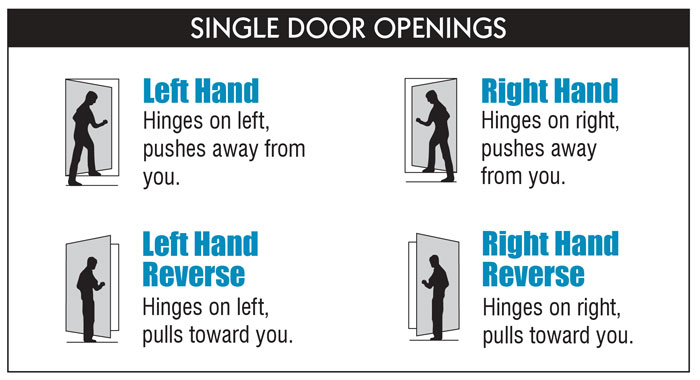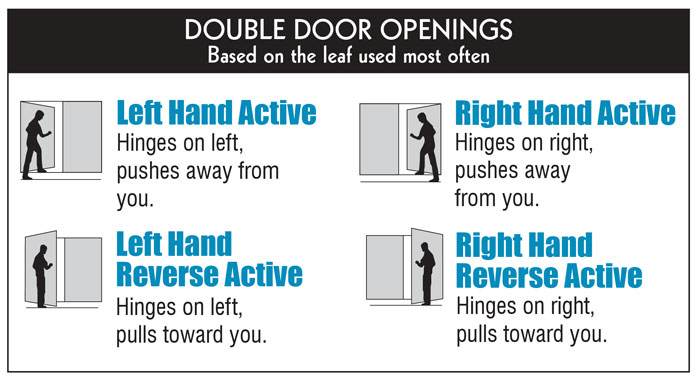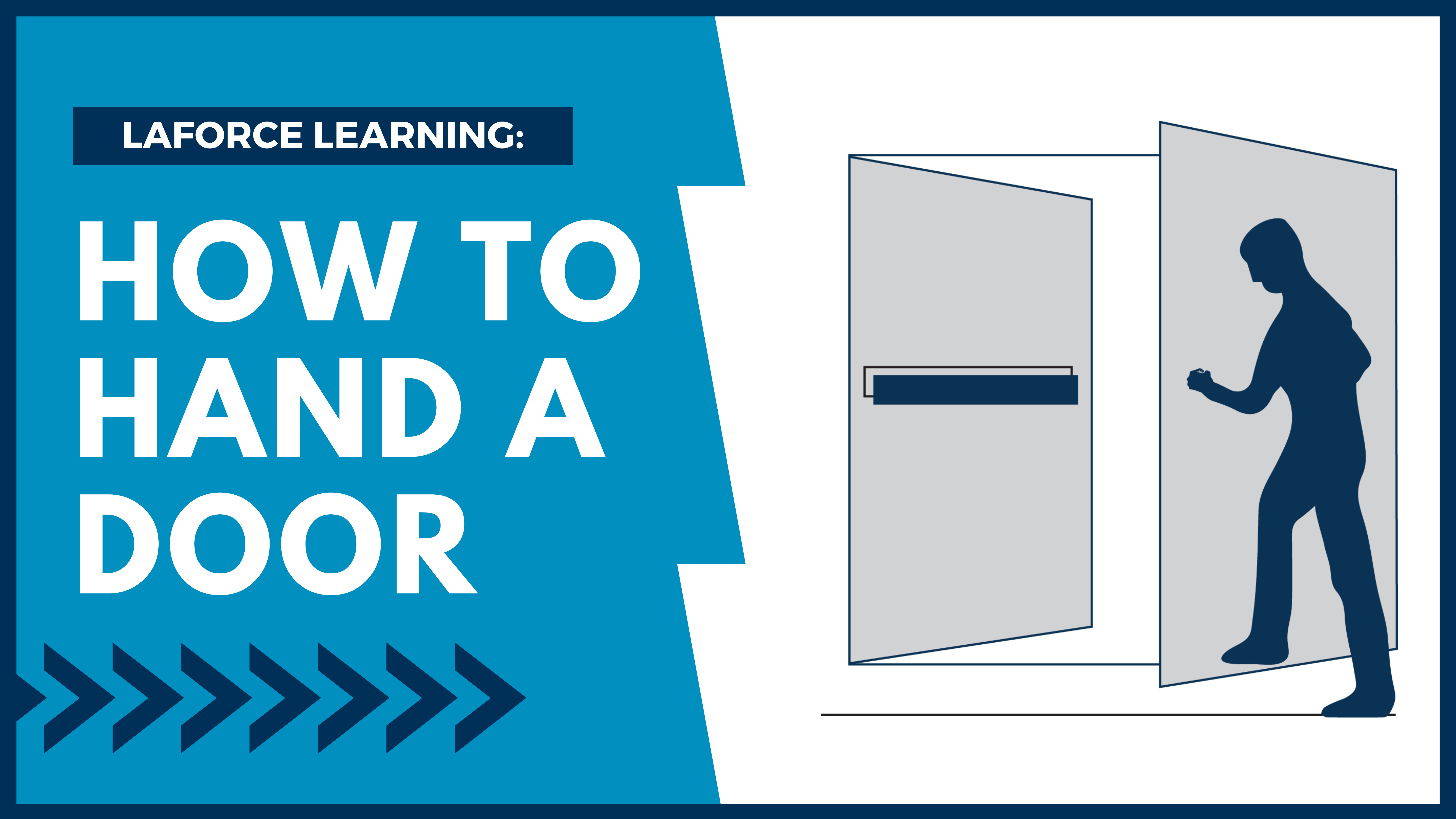For commercial doors determining the door swing direction, also known as door handing, is important for ordering the proper hardware, making sure the door is prepped correctly, and ensuring that the space protected by the door is functional.
Door Handing for Single Openings:
1: Begin by standing on the outside (secure side), facing the door.
The secure side is typically the side where you would insert the key to gain access to the building or a room. For doors without a keyed lock, stand on the side of the door where you would typically use a key to gain access to the building or room.
2: While still standing on the outside (secure side), determine the location of the hinges.
• If the hinges are located on the left side of the door it is “hinged on the left”
• If the hinges are on the right side of the door, it is “hinged on the right”
3: Continue to stand on the outside (secure side), to indicate the direction the door swings.
• If a door pulls toward you, it is a reverse handed door.
• If the door pushes away from you, it is not a reverse handed door.
4: Combine steps 1, 2, and 3 to come up with one of the four handings listed below.

- Left Hand: The door is hinged on the left and the door pushes away from you.
- Left Hand Reverse: The door is hinged on the left, and the door pulls towards you.
- Right Hand: The door is hinged on the right and the door pushes away from you.
- Right Hand Reverse: The door is hinged on the right, and the door pulls toward you.
Door Handing for Double Doors that Swing/Open in the Same Direction:
1. Begin by standing on the outside (secure side), facing the doors.
The secure side is typically the side where you would insert the key to gain access to the building or a room. For doors without a keyed lock, stand on the side of the doors where you would typically use a key to gain access to the building or room.
2. While still standing on the secure side of the doors, determine if there is an active leaf.
A “leaf” is referring to a single door panel, for double doors there are two “leaves.”
Active Leaf: The active leaf typically contains the locking hardware, or it is the leaf that is generally used most often. It is also the leaf that needs to be opened first before the other leaf will open.
Inactive Leaf: Typically, this is the leaf that does not have operable hardware on the secure side, and it usually will remain secure until the active leaf is opened.
2: While still standing on the outside (secure side), determine the location of the hinges on the active leaf.
• If the hinges are located on the left side of the active leaf it is “hinged on the left.”
• If the hinges are on the right side of the active leaf, it is “hinged on the right.”
3: Continue to stand on the outside (secure side), to indicate the direction of the door swing.
• If the active leaf pulls toward you, then it is reverse active.
• If the active leaf pushes away from you, then it is not reverse active.
4: Combine steps 1, 2, and 3 to come up with one of the four double door handings below.

- Left Hand Active: The active door is hinged on the left and the door pushes away from you.
- Left Hand Reverse Active: The active door is hinged on the left, and the door pulls toward you.
- Right Hand Active: The active door is hinged are on the right and the door pushes away from you.
- Right Hand Reverse Active: The active door is hinged on the right and the door pulls toward you.
Door Handing for Double Egress Door Openings:
Double egress doors are double doors that swing in opposite directions which can help control traffic. Their intent is to allow free access and egress (entering and exiting) from both directions using the door leaf that pushes away from you. To ensure traffic flows only from the push direction, the pull side of each door typically does not have any trim.
- Each leaf has an opposite “secure” side, which means both door leaves need to be noted for handing.
- When facing the doors, look at the leaf that pulls/swings towards you (pull side). Both doors are usually handed in the direction that pulls toward you because they often use panic hardware or fire exit hardware, and that type of hardware is only used on reverse swing doors.

- Left Hand Reverse x Left Hand Reverse: Each door leaf that pulls towards you is hinged on the left. Most common handing for a pair of double egress doors.
- Right Hand Reverse x Right Hand Reverse: Each door leaf that pulls towards you is hinged on the right.
Finally, it is important to note that commercial and residential contractor terms are not always the same! Always ask multiple questions to ensure a proper application to avoid costly mistakes. If you are ever unsure or need extra help, give us a call and we can help!



Follow Us